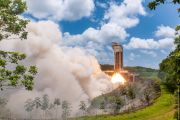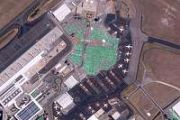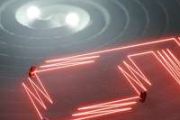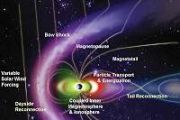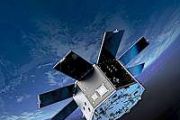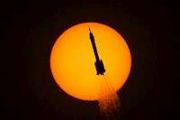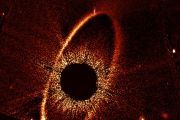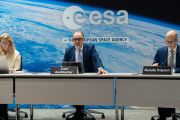
Copernical Team
ESA helps start-ups reach for the stars
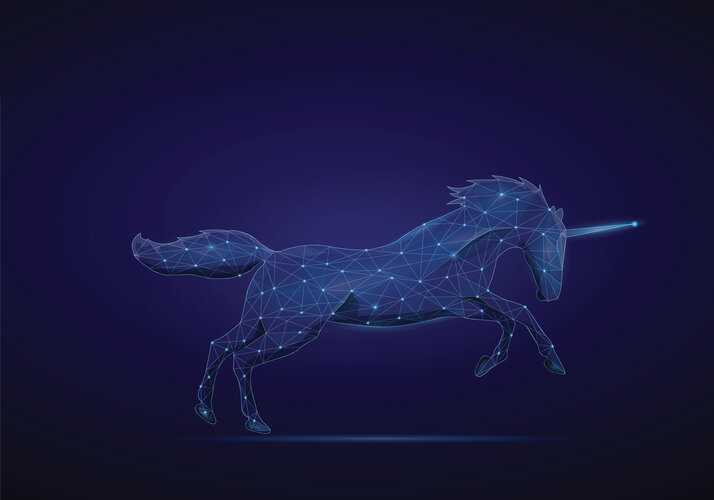
Four entrepreneurial small companies have won the chance to learn from senior figures at ESA and satellite manufacturer Thales Alenia Space, following an ESA-backed competition.
Researchers begin to understand correlation of schumann resonances and dust storms on Mars
 The interaction of dust particles in Martian dust storms may cause electric fields that are powerful enough to have charges that induce standing electromagnetic waves known as S?humann resonances. This is the conclusion drawn by physicists from HSE University, the Space Research Institute, and MIPT. The paper was published in Icarus journal.
Mars has been a focus of active study over the l
The interaction of dust particles in Martian dust storms may cause electric fields that are powerful enough to have charges that induce standing electromagnetic waves known as S?humann resonances. This is the conclusion drawn by physicists from HSE University, the Space Research Institute, and MIPT. The paper was published in Icarus journal.
Mars has been a focus of active study over the l Next Generation Very Large Array strongly endorsed by Decadal Survey
 The Astronomy and Astrophysics Decadal Survey (Astro2020) of the U.S. National Academy of Sciences has published its report and the Next Generation Very Large Array (ngVLA) received high priority for new ground-based observatories to be constructed during the coming decade. The report, in which ngVLA shared second ranking among ground-based projects, was the culmination of a lengthy process aime
The Astronomy and Astrophysics Decadal Survey (Astro2020) of the U.S. National Academy of Sciences has published its report and the Next Generation Very Large Array (ngVLA) received high priority for new ground-based observatories to be constructed during the coming decade. The report, in which ngVLA shared second ranking among ground-based projects, was the culmination of a lengthy process aime New great observatories, including Lynx, top ranked by Decadal Survey
 The 2020 Decadal Survey for Astronomy and Astrophysics has recommended a new series of three Great Observatories - or space-based telescopes - as a top national priority for the future of space astrophysics.
The Lynx X-Ray Observatory is included as part of this vision. Dozens of scientists and engineers at the Center for Astrophysics | Harvard and Smithsonian teamed with colleagues around
The 2020 Decadal Survey for Astronomy and Astrophysics has recommended a new series of three Great Observatories - or space-based telescopes - as a top national priority for the future of space astrophysics.
The Lynx X-Ray Observatory is included as part of this vision. Dozens of scientists and engineers at the Center for Astrophysics | Harvard and Smithsonian teamed with colleagues around Next space telescope should exceed James Webb' s ability to study planets
 NASA should begin plan for a massive new space telescope - one bigger than the largest telescope in history, the James Webb Space Telescope, according to a report from scientists around the country released Thursday.
"This large strategic mission is of an ambitious scale that only NASA can undertake and for which the U.S. is uniquely situated to lead," according to the National Academy
NASA should begin plan for a massive new space telescope - one bigger than the largest telescope in history, the James Webb Space Telescope, according to a report from scientists around the country released Thursday.
"This large strategic mission is of an ambitious scale that only NASA can undertake and for which the U.S. is uniquely situated to lead," according to the National Academy NASA Statement on Artemis Lunar Lander Court Decision
 NASA was notified Thursday that the U.S. Court of Federal Claims denied Blue Origin's bid protest, upholding NASA's selection of SpaceX to develop and demonstrate a modern human lunar lander. NASA will resume work with SpaceX under the Option A contract as soon as possible.
In addition to this contract, NASA continues working with multiple American companies to bolster competition and comm
NASA was notified Thursday that the U.S. Court of Federal Claims denied Blue Origin's bid protest, upholding NASA's selection of SpaceX to develop and demonstrate a modern human lunar lander. NASA will resume work with SpaceX under the Option A contract as soon as possible.
In addition to this contract, NASA continues working with multiple American companies to bolster competition and comm SIRIUS-21 to simulate flight to Moon starts in Moscow
 International isolation experiment SIRIUS-21 to simulate the flight and landing on the moon started on Thursday in Moscow, a Sputnik correspondent reported from the Institute of Biomedical Problems (IBMP) of the Russian Academy of Sciences.
Six people went on a conditional trip to the moon: Oleg Blinov, an instructor of the Cosmonaut Training Center; Viktoria Kirichenko, a surgeon at the I
International isolation experiment SIRIUS-21 to simulate the flight and landing on the moon started on Thursday in Moscow, a Sputnik correspondent reported from the Institute of Biomedical Problems (IBMP) of the Russian Academy of Sciences.
Six people went on a conditional trip to the moon: Oleg Blinov, an instructor of the Cosmonaut Training Center; Viktoria Kirichenko, a surgeon at the I NASA, SpaceX Reviewing Commercial Crew Rotation Plans
 NASA and SpaceX continue to review launch and return opportunities for the upcoming crew rotation flights to and from the International Space Station as part of the agency's Commercial Crew Program.
Mission teams now are considering whether to return the agency's SpaceX Crew-2 mission from the space station ahead of launching the next crew rotation due to the associated weather considerati
NASA and SpaceX continue to review launch and return opportunities for the upcoming crew rotation flights to and from the International Space Station as part of the agency's Commercial Crew Program.
Mission teams now are considering whether to return the agency's SpaceX Crew-2 mission from the space station ahead of launching the next crew rotation due to the associated weather considerati NASA could return astronauts on space station before replacements arrive
 Four astronauts could leave the International Space Station on Sunday without their replacement team having arrived to take over, NASA announced Thursday, but the timing remains uncertain due to weather conditions.
The four members of the Crew-2 mission, including a French and a Japanese astronaut, are due to return to Earth this month after spending about six months on board the ISS.
N
Four astronauts could leave the International Space Station on Sunday without their replacement team having arrived to take over, NASA announced Thursday, but the timing remains uncertain due to weather conditions.
The four members of the Crew-2 mission, including a French and a Japanese astronaut, are due to return to Earth this month after spending about six months on board the ISS.
N American Astronomical Society Supports Astro2020 Decadal Survey
 The American Astronomical Society (AAS), a major international organization of professional astronomers, astronomy educators, and amateur astronomers, supports the decadal survey report identifying scientific and foundational priorities, opportunities, and funding recommendations for astronomy and astrophysics in the coming decade and beyond. The report of the Astro2020 steering committee, sever
The American Astronomical Society (AAS), a major international organization of professional astronomers, astronomy educators, and amateur astronomers, supports the decadal survey report identifying scientific and foundational priorities, opportunities, and funding recommendations for astronomy and astrophysics in the coming decade and beyond. The report of the Astro2020 steering committee, sever 














